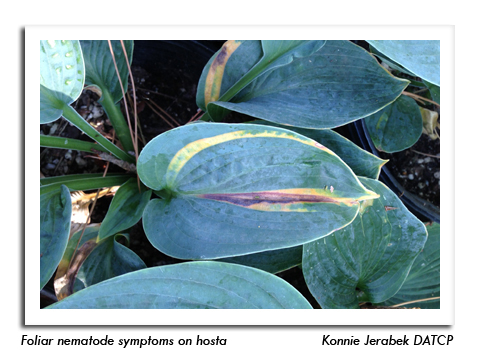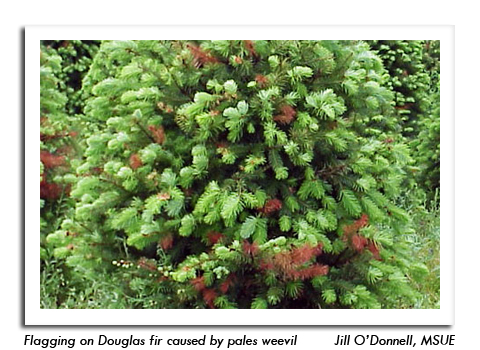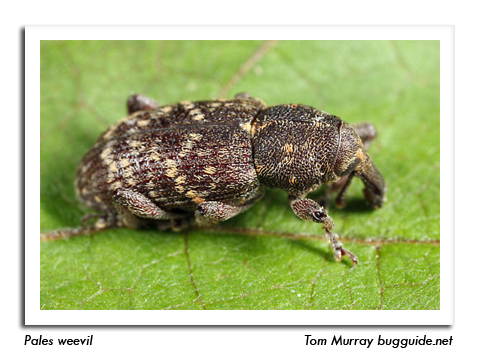
 |
|
|
Nursery & Forest
Volume 58 Number 17 Date 08/29/2013 FOLIAR NEMATODE - Several hosta cultivars at a Chippewa County nursery were showing necrotic leaf streaks indicative of foliar nematode infestation. The leaf streaks form as these microscopic roundworms feed on the leaf tissues between the veins. Leaf discoloration initially appears in June becomes more noticeable by late summer. Foliar nematodes spread by water splash and in vegetatively propagated plant material, and as a result, have become an increasingly common pest in the nursery trade. Some infested plants may be symptomless until nematode populations are very high, causing serious problems in hosta display plantings and for potted hosta sellers. Although they rarely kill their host, foliar nematodes reduce the plant's vigor and the symptoms are unsightly. Chemicals are not readily available for controlling foliar nematodes. Instead, systematic removal of infected plants is recommended to decrease the spread from infected to healthy plants. --Konnie Jerabek, DATCP Nursery Inspector PALES WEEVIL - Damage by this conifer pest was observed on eastern white pine in Dodge County. Pales weevil is a recurrent problem in Christmas tree plantations where periodic harvests leave many pine stumps suitable for weevil breeding. The adults feed on terminal shoots, causing girdling of the shoots and eventual flagging of branches. The greatest damage is usually inflicted in fall, from September to mid-October. Because the adult females lay their eggs on the roots of pine stumps, removing and destroying stumps or treating stumps before adults become active in the spring are the most effective controls. ASPEN BLOTCHMINER - Damage to aspens is reported over an extensive area in northeastern Wisconsin, including portions of Marinette, Oconto, Oneida and Vilas counties. Numerous acres are moderately to heavily infested. Larvae of this insect feed between the leaf surfaces, forming large, circular blotches and brown discoloration. Severely infested trees appear green in the upper crown and brown below. Significant, long-term damage is not expected. GYPSY MOTH - Examination of 14% of the 18,513 pheromone traps in Wisconsin has yielded a total male moth count of 73,241 as of August 28. This figure is considerably lower than the 115,013 moths reported at the same time last year. The adult flight period has ended in the southern counties, although activity is still being registered in the north. According to DNR aerial surveys, only 600 defoliated acres were observed statewide this season, in contrast to more than 14,000 acres last year. Larval mortality from the Entomophaga fungus was very high this year and few problems are anticipated in 2014. -- Liz Meils, DATCP Nursery Inspector 




|
|
|